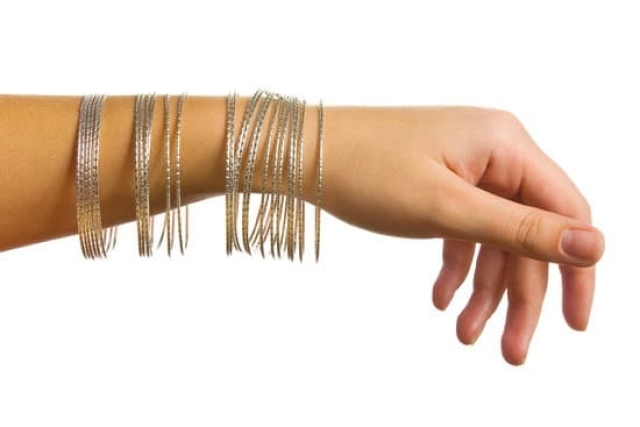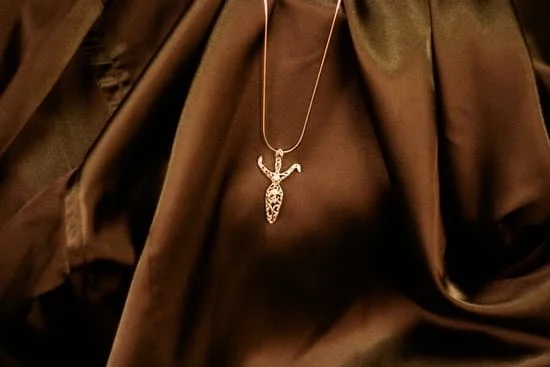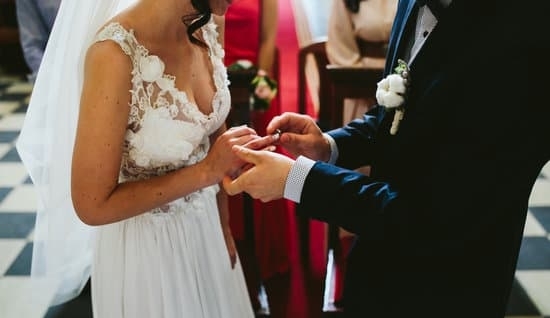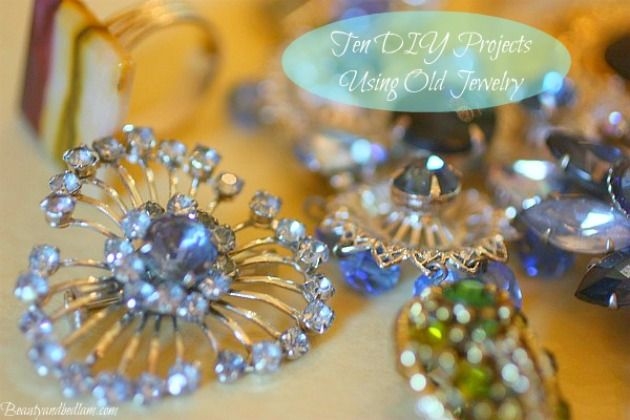Jewelry with precious stones is jewelry pieces such as rings, earrings, necklaces and bracelets that contain valuable gemstones such as diamonds, rubies and sapphires. These stones are thought to bring the wearer luck, prosperity or beauty and a collection of these precious stones often symbolizes success and wealth.
Despite their significant costs, gems have become increasingly popular in modern jewelry designs due to their attractive color and workability into specialized shapes. Although all jewelry is considered an investment in one’s appearance, pieces with gems will last longer over time since they are more durable than other materials.
The popularity of wearing jewelry with precious stones has been evident for centuries among many different cultures. In the past, members of royalty and nobility would adorn themselves with priceless gemstones to display their wealth and social standing within a community. Ancient priests believed that these objects had magical powers which could protect against illness or evil – a notion still embraced today by many who continue to wear semi-precious talismans or amulets for good luck or protection from danger.
The versatility of gemstone materials means that they can be crafted into almost any design imaginable including traditional Western styles as well as ethnically influenced accessories like African Masai beadwork. For example carved items such as cameos from Italy later found renewed popularity during the Renaissance period because wealthy patrons wanted exotic styles which incorporated various colored gems embedded in intricate patterns.
Similarly costume jewelry featuring faux gemstones crafted from crushed glass or acrylic became fashionable during the 1960s amongst teenagers looking for flamboyant designs at an affordable cost.
Today Original stones mined from around the world are highly sought after for luxury fashion accessories due to both rarity and beauty of many of these rare finds that no two pieces will ever look exactly alike due to variations in color and patterning between each stone even if cut from the same source.
Jewelers have developed innovative ways to set precious gems into new styles far beyond what was previously achievable, allowing clients everywherewith access to premium quality items perfect for those special occasions whatever form they take.
History of Precious Stones Used in Jewelry
The use of precious stones in jewelry dates back to the time of ancient Egypt. Egyptians often embedded numerous stones and minerals into their jewelry pieces representing a symbol of wealth, power, and social prestige.
For them, the value of these stones went far beyond mere aesthetics as many were believed to contain spiritual powers or protect from negative forces. Turquoise for example was thought to provide protection from the gods while the scarab beetle evolved into an iconic symbol closely associated with royal status.
Greeks and Romans
In Greece and Rome, the use of gems with symbolic implications increased drastically thanks to advancements in cutting techniques used to create more intricate jewels. It is here that traditions such as giving engagement rings set with diamonds began – signifying not only commitment but strength and eternity provided by the stone itself.
Sapphire joined diamond among favored stones along with emerald which was said to bring good luck and prosperity. Persian culture also lent its influence during this time with vases, brooches, and other fine objects featuring exquisite designs incorporating rare gemstones such as lapis lazuli (said to bring wisdom) garnet (thought to enhance creativity) and carnelian (associated with courage).
Medieval Europe
During Medieval Europe many pieces feature symbolism related to faith such as cross shapes adorned with various gemstones often decorated into ornate necklaces or circlets worn by religious leaders or wealthy noblemen (although it wasn’t uncommon for those of less privileged status to wear them too). Germany was especially known for its artisans who utilized historic metalworking skills combined with precision designs that incorporated selected gemstones creating sophisticated and beautiful pieces.
As technology improved, so did design options allowing craftspeople even greater scope for expression through this form of art-examples include delicate filigree adornments boasting ornate images including fleurs-de-lis quartrefoils birds flowers amongst others all created using an array of tiny precious gems like emeralds amethysts rubies sapphires aquamarines etc.
With knowledge passed down through generations these intricate creations remain popular today-beautiful testament’s both past appreciation for beauty as well as current trends have allowed continued relevance despite adaptations made over time such as colored stones replacing traditional ones addition bolder patterns adaptions classic styles etc.
Benefits of Precious Stones in Jewelry
Precious stones are highly valued and used in the making of jewelry for millions of years due to their outregeous beauty and magical healing properties. Many people believe that precious stones have mystical powers, some also attribute spiritual meanings behind symbolic stones.
The properties of each precious stone vary, allowing users to pick something which best suits their needs or desires. Some precious stones can be worn as a sort of shield, protecting its wearer from negative energy, while others are said to bring good luck and prosperity. It is believed that each stone has its own individual power, associated with unlocking secrets and getting back lost knowledge.
- Aventurine: Aventurine is commonly known as the ‘stone of opportunity’, helping to unlock ones inner potential by amplifying positive energies.
- Garnet: Garnet is believed to bring emotional balance and harmony whilst giving strength when it’s needed most.
- Opal: An opal protects its wearer from bad dreams whilst encouraging creativity and originality.
- Amethyst: The Amethyst stone helps users connect deeper spirituality by strengthening intuition and psychic visions.
- Quartz: Quartz is the ‘stone of clarity’ bringing awareness into our minds enhancing communication skills with others.
Precious gemstones have always been used historically as talismans in many different religions around the world. Such as Jade jewellery used by Chinese emperors and Turquoise bible girdles worn during religious ceremonies in various cultures throughout history.
Modern times has seen an increase usage in the healing benefits associated with such jewelry. Many people enjoy wearing them believing it will benefit their life in unimaginable ways. Books have been written about precious gems detailing how they can be programmed for desired outcomes while further exploring its religious implications too.
Popular Precious Stones Used in Jewelry
Jewelry with precious stones is one of the most sought after adornments with glittering beauty and timeless appeal. Precious stones enhance the quality of jewelry pieces in many ways. Be it rings, earrings, bangles or necklaces, they make them more captivating and special. They not only add beauty but also symbolic meaning to each piece of ornamentation as different stones signify distinct values. As such, popular precious stones used in jewelry range from diamonds to rubies to emeralds and more.
Diamonds have a dazzling appeal and represent everlasting love and commitment making them a favorite choice for wedding and engagement rings. Rubies convey passionate love; while sapphires are often used for anniversary gifts as they signify loyalty and trustworthiness. Emeralds carry a deeper symbolism highlighting friendship, love, fortune and peace; the perfect pick for those special occasions that bring joy to life. Opals are associated with good luck; turquoise is used for protection while aquamarines evoke harmony in relationships.
Synthetic stones have attracted attention lately as well due to their low cost coupled with an excellent look-alike aspect to mined gems. Synthetic sapphire may be used instead of its real counterpart for durable settings on items such as watches or challenging ones like protective windshield covers; white or pink cubic zirconia can blend into gold or silver items which contain cheap metals instead of pricey platinum or white gold discreetly camouflaging shoddier metals from view.
Synthetic gems are made out of man-made materials at controlled laboratory conditions – although they lack the shine and clarity similar to natural minerals, they still offer level of durability comparable to mined variants making them an economical pick when paired with the right attire.
Steps to Clean and Care for Precious Stones
- Pearls – gently wipe with a soft cloth and avoid using detergent. Natural oils such as coconut oil may be used to restore luster.
- Diamonds – use a mild soap solution mixed with water and feel free to soak diamond jewelry for up to half an hour.
- Emeralds – soak emerald jewelry in a warm (not too hot) soapy water mixture, which can clean off beauty products or residue.
- Rubies – begin by brushing the stone with either a soft toothbrush, brush or cloth. To remove dirt build-up, please dampen the brush in warm water.
For many people, jewelry is something that expresses their personal style. Precious stones are often found in these pieces of jewelry and require special care and attention when cleaning. To effectively clean precious stones at home, it is important to understand the characteristics of each type of stone before beginning.
The first step is to carefully inspect the jewelry for any dirt or damage on the surface of the stone prior to cleaning. Depending on how dirty or grimey the stone looks, different techniques may be needed. For example, pearls are one of the most delicate types of stone and should be wiped gently by using only a soft cloth rather than soaps as they tend to erode away its luster over time.
Diamonds typically are well protected against everyday dust but it’s always best practice to give them regular additional cleaning. A good 20 minute soak in a mild soap solution might do wonders while other tougher build ups might require using something more abrasive such as a specialized type of bristle brush made specifically for diamonds.
Emeralds are known for their hardness but they also have some surface fissuring that makes them prone to collecting dirt especially around built-up residue from beauty products and daily skin care items like makeup. Soaking them in warm soap water with some mild detergent can give them extra shine after giving them some light brushing.
Rubies have similar properties compared to diamonds since they too are rated very high on Moh’s scale of hardness making them resilient against simple dusting but this doesn’t guarantee that they will stay looking like new forever without regular maintenance.
The best way would be once again by doing some light brushing followed by dampening with either plain water or hot water depending on how much grime is gathered up along the crevices formed between facets and girdles; afterwards pat dry with a clean yet soft towel or cloth material.
How to Choose the Right Precious Stones for Jewelry
When it comes to purchasing jewelry it is important to be aware of the various types of precious stones. Deciding which ones work best for your style and budget can be overwhelming. Using these techniques and tips will help you make the most informed decision when selecting precious stones for your jewelry.
Look for The Four Cs
The main things to consider when selecting a diamond or other gemstones for jewelry are called the ‘Four Cs’, these are: Cut, Clarity, Color and Carat Weight. In order to understand how these factors contribute to the cost and value of a piece of jewelry, it helps to learn more about them before making a purchase.
First is cut: This refers to the craftsmanship of the stone, including its shape, symmetry and accuracy of its angles. Poorly cut diamonds may appear dull as they don’t reflect much light whereas well-cut gems sparkle brightly.
Second is clarity: Diamonds with less natural inclusions (internal defects) or blemishes have higher values than those with distinct imperfections. Different grades on the clarity scale are based on how visible inclusions or flaws appear under magnification.
Third is color: GIA (Gemological Institute of America) typically divides diamond color grades up into 11 levels ranging from D (colorless) to Z (light yellow). The more colorless a diamond appears under strict lighting conditions increases its value due high demand and rarity. Other gems such as rubies or sapphires also follow similar scales of intensity according to their respective colors.
And fourth is carat weight: The size or weight of diamond expresses in terms of carats (1 carat = 0.2 grams). Bigger does not always equate better quality; however increased sizes do tend to come with slightly higher prices per carat – due partially too rarity associated with them. Prices will also depend on the quality assessment that was defined by first three ‘Cs’ mentioned above\.
Consider Setting Quality
Aside from choosing quality stones structure also plays a major part in lasting appeal and increased price values when reselling at later time -. This means opting for classic gold 14 Karat settings whenever possible rather than cheaper alternative metals like silver plated zinc alloy etc Although such pieces can look very convincing initially – they lose value quickly since valuable metals like gold palladium or platinum can retain same near-new condition even after decades long use.
As real estate saying goes – one should focus on “Location, Location, Location” while shopping for jewelry choose materials that require decent care but not impossible maintenance; especially if lacking appropriate tools/skills to perform detailed servicing as needed over time such might be case.
For instance looking out reliable gemstone glued setting wouldn’t require repolishing ever nor likely experience extensive wear tear throughout lifespan – such as option over there fragile prong style mounting – that could loosen overtime leading dust & dirt accumulation underneath causing premature opaque look requiring resetting down line.
Check Certificate
A certificate issued by GIA should accompany any serious investment grade purchases whose genuine nature confirmed by team expert using advanced equipment & technology that determined key details described earlier.
Do keep copy proof purchase case item ever leaves possession : Relying solely resale transactions verbal biography without proper record validation could prove dangerous venture itself, costing thousands reputation & fortune doesn’t add up aftermath difficulties arise along way due miscommunication delays fluctuating exchange rates & unstable supply chains accompanied every transaction today’s day age when evaluating suitability fixed budget.
Where to Purchase Quality Jewelry with Precious Stones
When purchasing jewelry featuring precious stones, it is important to look for quality pieces as well as ethical sources. Good-quality jewelry typically signifies an enduring material, excellent craftsmanship, lasting finishes, exceptional design and of course the beauty of the gemstone.
Furthermore, more and more consumers are being conscious of their purchases; looking for good quality materials used in the production process of the jewellery while also ensuring they are ethically sourced.
- Always look for Gemstones mentioned in Ethical guidelines
- Check Manufacturer’s Labour Standards
- Research manufacturers using Internet
- Check Online reviews about product Quality
Where To Shop For Jewelry with Precious Stones?
It is important that when looking for jewelry featuring precious stones you should be aware where your stones come from. Visit physical jeweler’s shops or well known online websites to purchase your jewelry. Be sure to check if these retailers have certified methods of sourcing their materials through sustainable programs.
- Look for reputable jewelers near your local area or online stores such as Blue Nile or Tiffany & Co.
- Shop with specialized multi-vendor boutiques such as Etsy and Amor, who sell exquisite handmade jewelry with precious stones.
- Verify customer reviews or comments regarding products before making a purchase.
Wrapping Up
When choosing the best jewelry with precious stones, it is important to recognize how to identify both real and imitation pieces. This helps shoppers avoid wasting money on jewelry that may be of low-quality or falsely advertised. There are certain signs that signify a genuine piece, though other vital pieces of information must also be known before making such an investment.
When looking to purchase valuable stones, it is important to learn as much as possible about the type of stone being purchased. Gathering information such as country or region where the gemstone originated and color can help narrow down the selection process.
One should also take into consideration the ‘four Cs’ – cut, clarity, color and carat when selecting a special piece. Additionally, many websites provide a guide for gemstones and all their individual properties, making identifying distinct characteristics easier than ever before.
It is beneficial to have some experience in gemology when dealing with jewelry containing precious stones since even experienced jewelers may be duped by counterfeiters who are adept at passing off fake gems for real ones. However, there are still ways for buyers to protect themselves from buying a fake product. For example, purchasing from trusted sources like ASJ Diamond & Gems is very important since they guarantee quality control and authentication processes.
By assessing quality certificates from independent labs like GIA (Gemological Institute of America), customers can verify legitimacy of each gemstone used in jewelry pieces from select suppliers. If evaluating a specific piece in person, one can examine facets of the stone’s setting very carefully – any bubbling on the metal could indicate an imitation stone was recently placed into it by a counterfeiter attempting to pass the item off as genuine valuable gemstones.
In conclusion, purchasing valuable stones based on examination and knowledge about gemstones rather than purchasing solely based on appearance ensures buyers will receive authentic products that meet their desired needs while preventing them wasting money inimitations or low-grade materials masquerading as high-end stones. Knowing howto spot imitations that look almost exactly like jewels of remarkable value behooves potential customers before investing too heavily in something they aren’t familiar with.

Welcome to my jewelry blog! My name is Sarah and I am the owner of this blog.
I love making jewelry and sharing my creations with others.
So whether you’re someone who loves wearing jewelry yourself or simply enjoys learning about it, be sure to check out my blog for insightful posts on everything related to this exciting topic!





